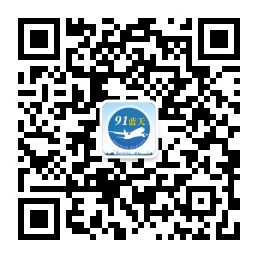航空英语:“天宫一号”英语知多少
Tiangong 1 is a Chinese space laboratory, intended as a test-bed to develop the rendezvous and docking capabilities needed to support a larger, inhabited space station complex. The launch of Tiangong 1, aboard a Long March 2F rocket, is planned for late September 2011.
天宫一号是中国空间实验站,作为一个试验台,它将发展交会对接技术,用以支持更大更复杂的居住空间站。预计搭乘长征2F火箭的天宫一号将于9月底发射。
Design and development
According to the China National Space Administration (CNSA), Tiangong 1 is an 8.5-metric-ton “space laboratory module”, capable of docking with manned and autonomous spacecraft. The Shenzhou 8, Shenzhou 9 and Shenzhou 10 spacecraft are expected to dock with it during its two-year operational lifespan.
设计和发展
根据中国国家航天局(CNSA)介绍,天宫一号是一个重8.5吨的“空间实验模块”,能够与载人航天器和无人自动航天器进行对接。在“天宫一号”2年左右的使用寿限里,它将先后完成与神舟八号、神舟九号、神舟十号的太空对接。
On 29 September 2008, Zhang Jianqi , Vice Director of the China Manned Space Engineering Office (CMSEO), declared in an interview with China Central Television (CCTV) that Tiangong 1 would be launched in 2010 or 2011.
2008年9月29日,中国载人航天工程办公室(CMSEO)副指挥张建启在央视(CCTV)采访中透露,“天宫一号”将于2010年或2011年发射升空。
By mid-2011, the construction of the Tiangong module was complete, and testing of its electronic, mechanical and thermal properties was underway. Testing was also conducted on the Long March 2F carrier rocket on which Tiangong 1 is expected to be launched. Chinese astronauts, including two women, underwent training for manned missions to the space station.
到2011年年中,“天宫一号”模块的建设已经完成,电子、机械、热性能方面的测试也已全面展开。用来发射“天宫一号”的改进型长征二号F运载火箭也进行着各项研制、试验工作。中国宇航员,包括两名女性宇航员,也开始接受空间站载人任务的训练。
Missions to Tiangong 1
The unmanned Shenzhou 8 mission is planned to dock with Tiangong 1 in late 2011, marking China’s first orbital docking. The subsequent manned Shenzhou 9 and Shenzhou 10 missions are planned to dock with Tiangong 1 in 2012.
天宫一号的任务
无人航天器“神舟八号”计划将于2011年底与“天宫一号”完成对接,这标志着我国将完成第一次轨道对接。之后,载人航天器“神舟九号”和“神舟十号”也将计划于2012年与“天宫一号”对接。
Launch schedule
Tiangong 1 was originally intended to be lanched in August 2011, and was transported as planned to the Jiuquan Satellite Launch Center on 26 August. However, following the failed launch of a Long March 2C rocket in August 2011, the launch was postponed, as the Long March 2C is highly similar to the Long March 2F that is to be used for the Tiangong 1 launch. Following an investigation into the August launch failure, Tiangong 1’s launch was rescheduled for late September 2011, partly to coincide with the Chinese National Day on 1 October.
发射日程
“天宫一号”原计划于2011年8月发射升空,并且在8月26号如期运抵酒泉卫星发射中心。但是由于2011年8月长征二号丙火箭发射失利,发射“天宫一号”的长征二号F运载火箭与长征二号丙火箭属于同一系列,“天宫一号”的发射也因此推迟。
根据对8月火箭发射失利事件的调查,“天宫一号”的发射时间被重新安排至2011年9月底,一定程度上也刚好与中国“十一”国庆节同步



 微信收款码
微信收款码 支付宝收款码
支付宝收款码